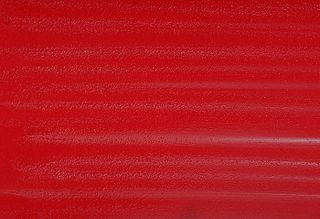A caron, háček or haček also known as a hachek, wedge, check, inverted circumflex, inverted hat, is a diacritic (ˇ) commonly placed over certain letters in the orthography of some Baltic, Slavic, Finnic, Samic, Berber, and other languages to indicate a change in the related letter's pronunciation.

Haemophilus ducreyi is a fastidious gram-negative coccobacillus bacteria, which causes the sexually transmitted disease chancroid, a major cause of genital ulceration in developing countries characterized by painful sores on the genitalia. Chancroid starts as an erythematous papular lesion that breaks down into a painful bleeding ulcer with a necrotic base and ragged edge.
The HACEK organisms are a group of fastidious Gram-negative bacteria that are an unusual cause of infective endocarditis, which is an inflammation of the heart due to bacterial infection. HACEK is an abbreviation of the initials of the genera of this group of bacteria: Haemophilus, Aggregatibacter, Cardiobacterium, Eikenella, Kingella. The HACEK organisms are a normal part of the human microbiota, living in the oral-pharyngeal region.

The grapheme Čč is used in various contexts, usually denoting the voiceless postalveolar affricate consonant like the English ch in the word chocolate. It is represented in Unicode as U+010C and U+010D.

Haemophilus influenzae is a Gram-negative, coccobacillary, facultatively anaerobic pathogenic bacterium belonging to the Pasteurellaceae family. H. influenzae was first described in 1892 by Richard Pfeiffer during an influenza pandemic.

The Pasteurellaceae comprise a large family of Gram-negative bacteria. Most members live as commensals on mucosal surfaces of birds and mammals, especially in the upper respiratory tract. Pasteurellaceae are typically rod-shaped, and are a notable group of facultative anaerobes. Their biochemical characteristics can be distinguished from the related Enterobacteriaceae by the presence of oxidase, and from most other similar bacteria by the absence of flagella.
The grapheme Ť is a letter in the Czech and Slovak alphabets used to denote /c/, the voiceless palatal stop. It is formed from Latin T with the addition of háček, minuscule (ť) has háček modified to apostrophe-like stroke instead of wedge. In the alphabet, Ť is placed right after regular T.
The grapheme Ď is a letter in the Czech and Slovak alphabets used to denote, the voiced palatal plosive. It was also used in Polabian. It is formed from Latin D with the addition of háček, minuscule (ď) has háček modified to apostrophe-like stroke instead of wedge. In the alphabet, Ď is placed right after regular D.
Aggregatibacter actinomycetemcomitans is a Gram-negative, facultative anaerobe, nonmotile bacterium that is often found in association with localized aggressive periodontitis, a severe infection of the periodontium. It is also suspected to be involved in chronic periodontitis. Less frequently, A. actinomycetemcomitans is associated with nonoral infections such as endocarditis. Its role in aggressive periodontitis was first discovered by Danish-born periodontist Jørgen Slots, a professor of dentistry and microbiology at the University of Southern California School of Dentistry.
The Haemophilus influenzae type B vaccine, often called Hib vaccine, is a vaccine used to prevent Haemophilus influenzae type b (Hib) infection. In countries that include it as a routine vaccine, rates of severe Hib infections have decreased more than 90%. It has therefore resulted in a decrease in the rate of meningitis, pneumonia, and epiglottitis.

Disintegrin and metalloproteinase domain-containing protein 2 or Beta-fertilin is an enzyme that in humans is encoded by the ADAM2 gene.

Interferon alpha-14 is a protein that in humans is encoded by the IFNA14 gene.

SH3 domain-binding glutamic acid-rich-like protein is a protein that in humans is encoded by the SH3BGRL gene.

Actinobacillus is a genus of Gram-negative, nonmotile and non-spore-forming, oval to rod-shaped bacteria occurring as parasites or pathogens in mammals, birds, and reptiles. It is a member of the Pasteurellaceae family. The bacteria are facultatively aerobic or anaerobic, capable of fermenting carbohydrates, and of reducing nitrates. The genomic DNA contains between 40 and 47 mol % guanine plus cytosine.

Cardiobacterium hominis is a Gram-negative bacillus (rod-shaped) bacterium commonly grouped with other bacteria into the HACEK group. It is one of several bacteria that is normally present in the mouth and upper part of the respiratory tract such as nose and throat. However, it may also rarely cause endocarditis, an infection of the heart valves.
Haemophilus meningitis is a form of bacterial meningitis caused by the Haemophilus influenzae bacteria. It is usually associated with Haemophilus influenzae type b. Meningitis involves the inflammation of the protective membranes that cover the brain and spinal cord. Haemophilus meningitis is characterized by symptoms including fever, nausea, sensitivity to light, headaches, stiff neck, anorexia, and seizures. Haemophilus meningitis can be deadly, but antibiotics are effective in treating the infection, especially when cases are caught early enough that the inflammation has not done a great deal of damage. Before the introduction of the Hib vaccine in 1985, Haemophilus meningitis was the leading cause of bacterial meningitis in children under the age of five. However, since the creation of the Hib vaccine, only two in every 100,000 children contract this type of meningitis. Five to ten percent of cases can be fatal, although the average mortality rate in developing nations is seventeen percent, mostly due to lack of access to vaccination as well as lack of access to medical care needed to combat the meningitis.
Haemophilus parainfluenzae is a species of Haemophilus.
N-glycosyltransferase is an enzyme in prokaryotes which transfers individual hexoses onto asparagine sidechains in substrate proteins, using a nucleotide-bound intermediary, within the cytoplasm. They are distinct from regular N-glycosylating enzymes, which are oligosaccharyltransferases that transfer pre-assembled oligosaccharides. Both enzyme families however target a shared amino acid sequence asparagine—-any amino acid except proline—serine or threonine (N–x–S/T), with some variations.







